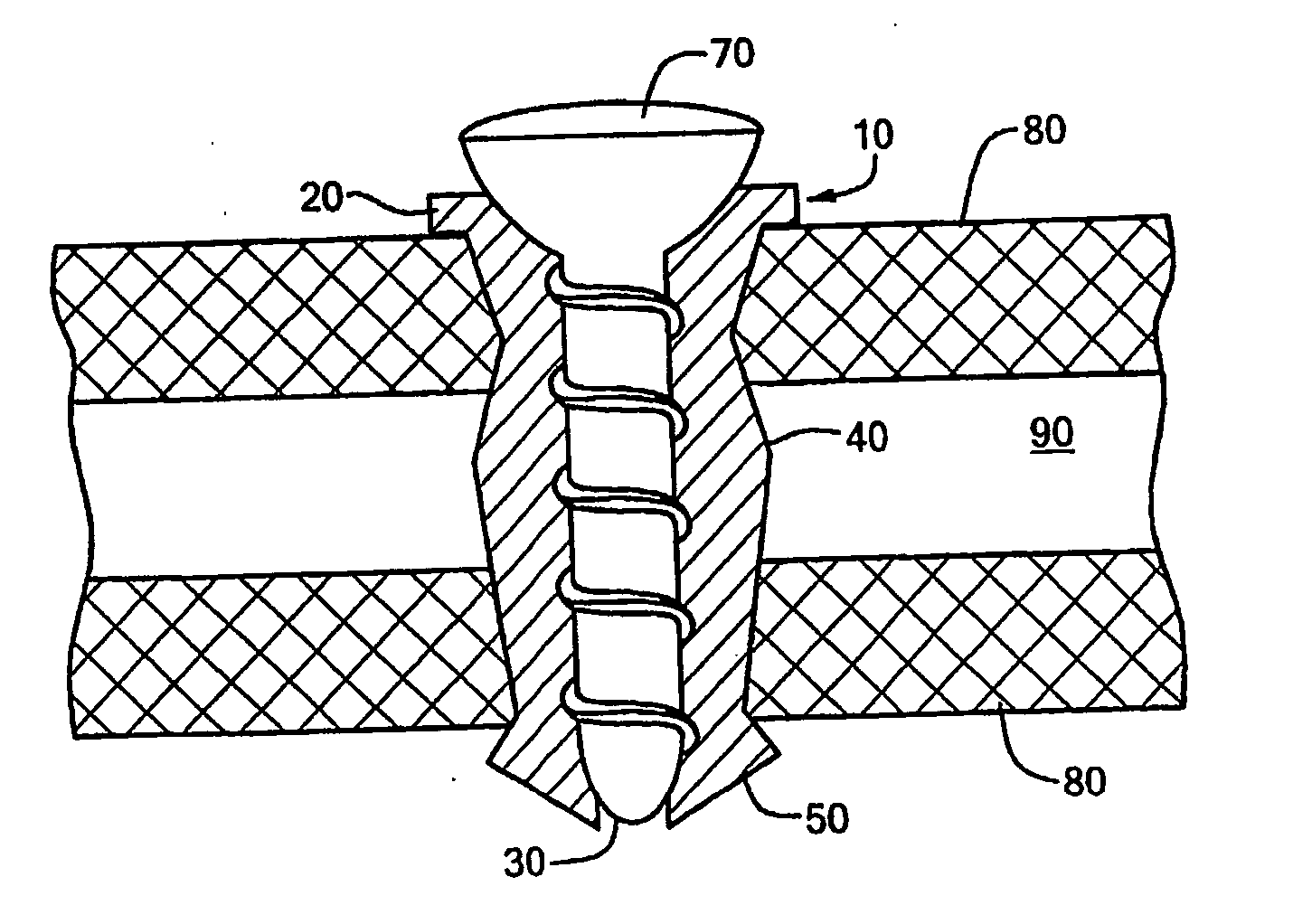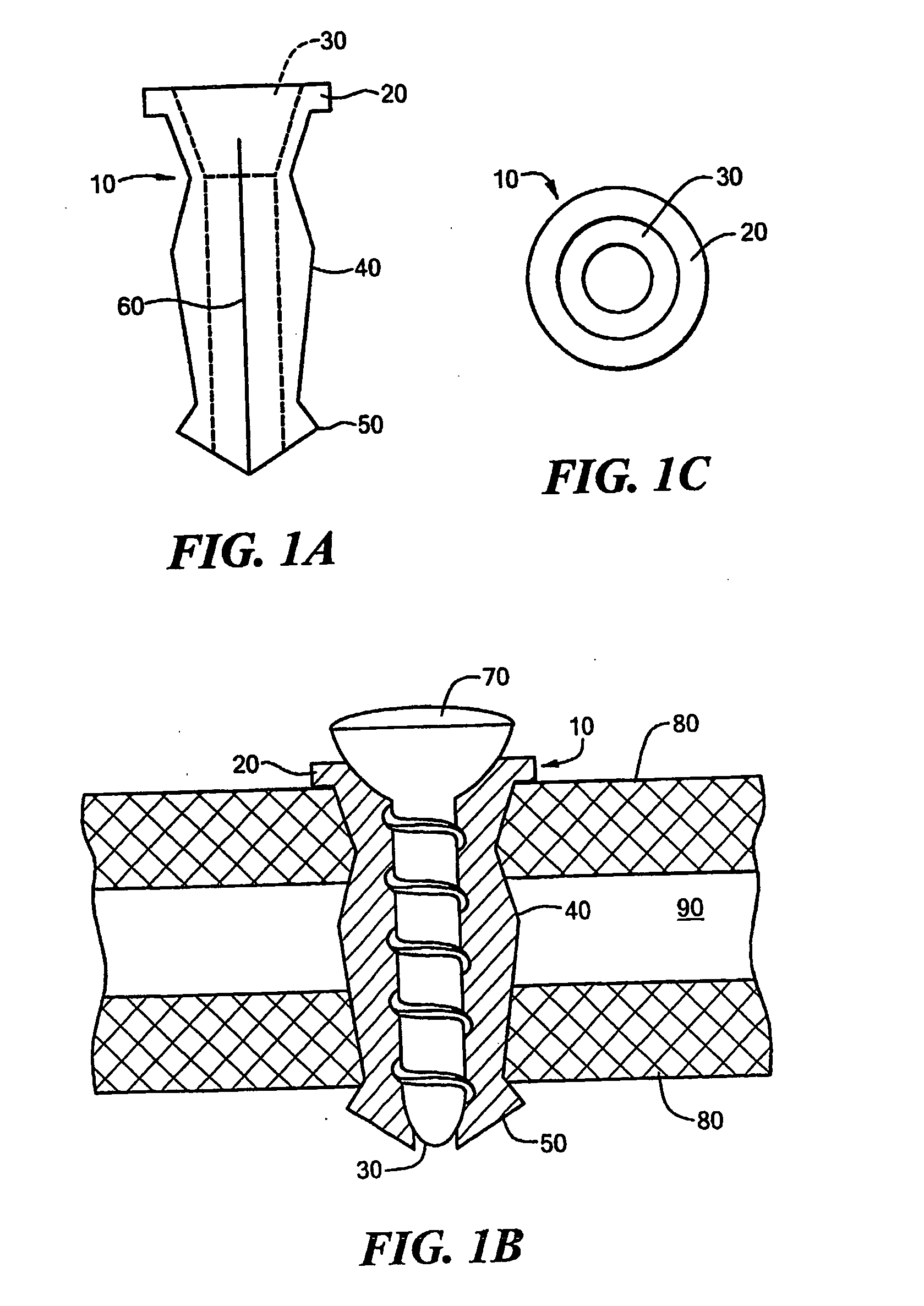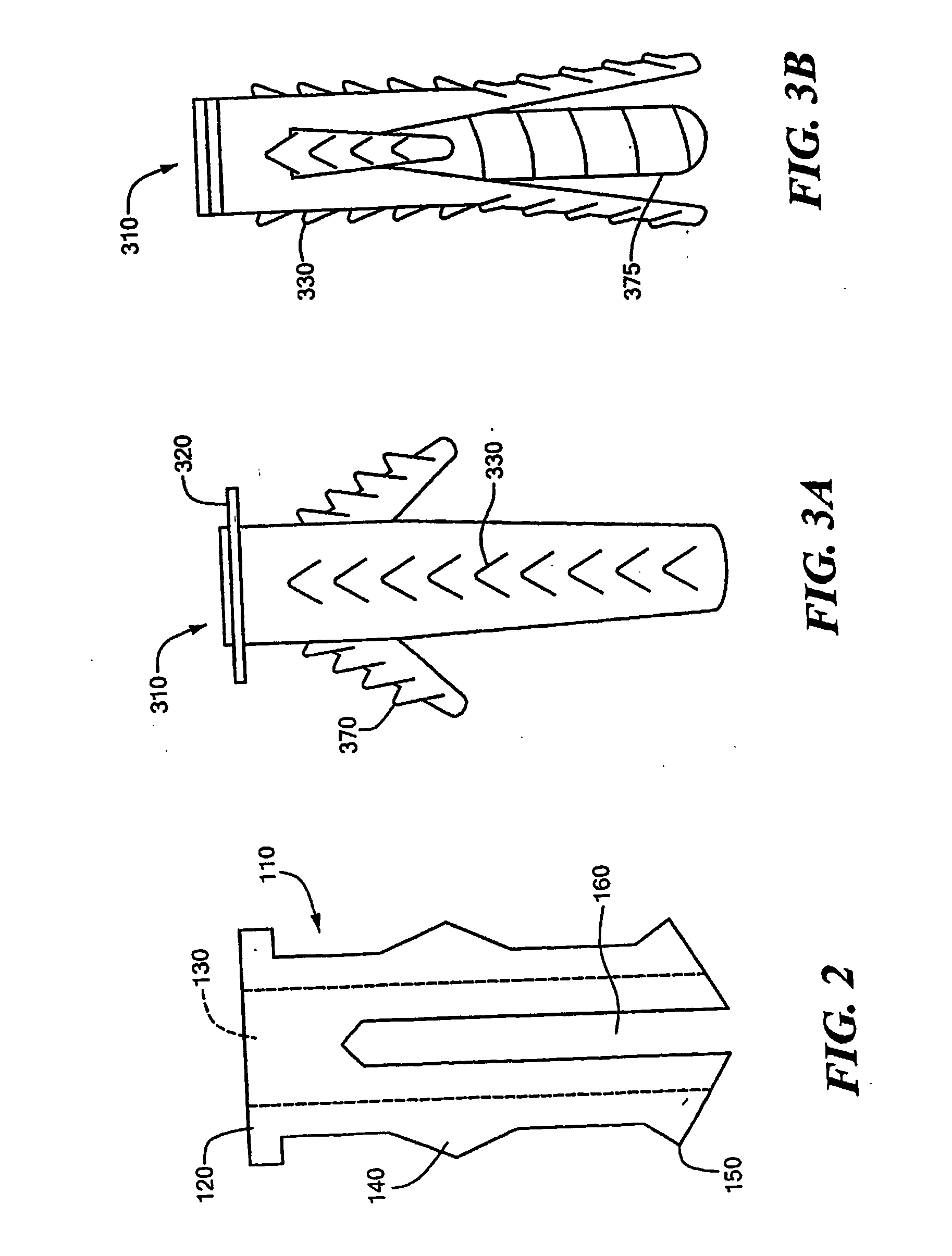Fixation augmentation device and related techniques
a fixation device and fixation technology, applied in the field of surgical fasteners, can solve the problems that cannot be achieved with a round collar, and achieve the effects of enhancing fixation, improving screw purchase, and enhancing fixation
- Summary
- Abstract
- Description
- Claims
- Application Information
AI Technical Summary
Benefits of technology
Problems solved by technology
Method used
Image
Examples
second embodiment
[0080] a FAD 110, is shown in FIG. 2. The FAD 110 has a similar structure as FAD 10. FAD 110 includes a collar 120, a core 130, an interference region 140, a flange portion 150 and a slot 160. Operation of FAD 110 is similar to the operation of FAD 10 described above. FAD 110 clips into place in a bone hole. Slot 160 allows for the ends of the FAD to adequately clip into place.
embodiment 310
[0081] Referring now to FIGS. 3A-B, another embodiment 310 of a FAD is shown. In this embodiment the interference region is provided having a plurality of ridges or teeth 330 on an outer surface thereof. The ridges 330 help secure the FAD within the bone hole. FAD 310 further includes wings 370 in the interference region which expand in response to a screw passing through the interference region and which secure the FAD within the bone hole. The outer walls of the FAD 310 can be ribbed, threaded or fretted to enhance the fixation of the device within the bone hole. Further the outer surface of the collar can also be ribbed, threaded or fretted to enhance the fixation of the device. As shown in to FIG. 3B, the interference region includes wings 375 in an end portion thereof which expand in response to a screw passing through the interference region such that when the wings are deployed, the wings engage an outer surface of the bone and increase the pull force required to remove the F...
fourth embodiment
[0101] Referring now to FIGS. 13A-13D, a FAD 1370 is shown. FAD 1370 includes a tubular body or sleeve 1372. The sleeve 1372 has a collar 1374 disposed on a first end thereof. Collar 1374 preferably has a generally oval shape that prevents rotation of the device when inserted into a bone plate or to allow a surface for a tool to use during the insertion of the device or during insertion of a screw into the device. A generally oval shoulder section 1384 is shown extending from the collar 1374. Shoulder 1384 has a tapered outer wall surface 1384a (FIG. 13D) and a tapered inner wall surface 1384b. FAD 1370 is preferably used with a bone plate, wherein the collar 1374 extends through a hole in the bone plate while shoulder 1384 extends into and engages an inner surface of the hole in the bone plate. The FAD 1370 is inserted into the bone plate hole and into the bone hole. When a screw is inserted into FAD core 1378, the FAD 1370 is securely engaged with the bone plate by way of shoulder...
PUM
 Login to View More
Login to View More Abstract
Description
Claims
Application Information
 Login to View More
Login to View More - R&D
- Intellectual Property
- Life Sciences
- Materials
- Tech Scout
- Unparalleled Data Quality
- Higher Quality Content
- 60% Fewer Hallucinations
Browse by: Latest US Patents, China's latest patents, Technical Efficacy Thesaurus, Application Domain, Technology Topic, Popular Technical Reports.
© 2025 PatSnap. All rights reserved.Legal|Privacy policy|Modern Slavery Act Transparency Statement|Sitemap|About US| Contact US: help@patsnap.com



